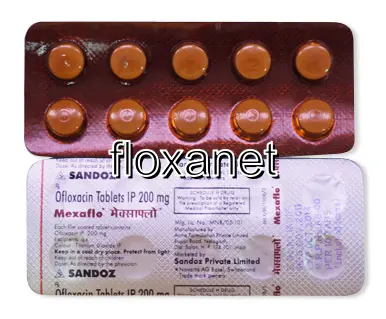| Package | Dosage | Price | Price per Dose | |
|---|---|---|---|---|
| Dosage: 100mg | ||||
| 360 pill | 100mg | £448.40 | £1.25 | |
| 180 pill | 100mg | £238.73 | £1.33 | |
| 120 pill | 100mg | £173.33 | £1.44 | |
| 90 pill | 100mg | £138.04 | £1.54 | |
| 60 pill | 100mg | £100.67 | £1.67 | |
| 30 pill | 100mg | £55.00 | £1.82 | |
| 20 pill | 100mg | £37.36 | £1.89 | |
| 10 pill | 100mg | £20.75 | £2.04 | |
| Dosage: 200mg | ||||
| 360 pill | 200mg | £583.34 | £1.62 | |
| 180 pill | 200mg | £296.85 | £1.65 | |
| 120 pill | 200mg | £207.59 | £1.73 | |
| 90 pill | 200mg | £163.99 | £1.82 | |
| 60 pill | 200mg | £117.28 | £1.95 | |
| 30 pill | 200mg | £62.27 | £2.09 | |
| 20 pill | 200mg | £43.59 | £2.18 | |
| 10 pill | 200mg | £22.83 | £2.23 | |
| Dosage: 400mg | ||||
| 180 pill | 400mg | £324.88 | £1.81 | |
| 120 pill | 400mg | £228.35 | £1.90 | |
| 90 pill | 400mg | £183.71 | £2.04 | |
| 60 pill | 400mg | £132.85 | £2.21 | |
| 30 pill | 400mg | £72.65 | £2.41 | |
| 20 pill | 400mg | £50.85 | £2.52 | |
| 10 pill | 400mg | £25.94 | £2.63 | |

Ofloxacin Description
Overview of Ofloxacin
Ofloxacin is a widely used antibiotic in the fluoroquinolone class. It is commonly prescribed to treat a variety of bacterial infections. This medication works by inhibiting the DNA gyrase and topoisomerase IV enzymes, which are essential for bacterial DNA replication. As a result, it helps in stopping the growth and spread of bacteria, making it effective against both Gram-positive and Gram-negative bacteria.
Uses and Indications
Ofloxacin is prescribed for several infections including urinary tract infections, respiratory tract infections, skin infections, and sexually transmitted infections such as chlamydia. It is also used in ophthalmic forms to treat bacterial conjunctivitis, and in some cases, it may be recommended for sinusitis or prostatitis. The wide range of indications makes it a versatile antibiotic in various clinical settings.
Dosage and Administration
Depending on the type and severity of the infection, the dosage of Ofloxacin can vary. Typically, oral tablets are taken twice daily, with dosages ranging from 200 mg to 400 mg per dose. It is important to follow the healthcare provider's instructions closely. To ensure optimal absorption, Ofloxacin should be taken with a full glass of water and on an empty stomach or at least an hour before or two hours after meals. Patients should complete the entire course prescribed, even if symptoms improve early, to prevent resistance.
Potential Benefits
Many patients find Ofloxacin highly effective in eliminating bacterial infections. It often provides quick symptom relief and helps avoid the complications associated with untreated infections. Due to its broad-spectrum activity, it can target various bacteria that cause common infections, making it a convenient choice for healthcare providers.
Possible Side Effects
As with all antibiotics, Ofloxacin may cause side effects. Some common reactions include nausea, diarrhea, dizziness, and abdominal pain. More rarely, patients may experience allergic responses such as rash, itching, or swelling. Serious but less common issues involve tendinitis, tendon rupture, or nerve problems. Users are advised to report any unusual or severe symptoms to their doctor promptly.
Precautions and Warnings
Before taking Ofloxacin, patients should inform their healthcare provider about any allergies, particularly to fluoroquinolones. It is also important to discuss other medications being taken, as Ofloxacin can interact with drugs like antacids, corticosteroids, and blood thinners. Use caution in elderly patients and those with a history of tendon disorders or neurological problems. Pregnant and breastfeeding women should consult their physicians before use.
Drug Interactions
Ofloxacin can interact with several medicines, potentially reducing effectiveness or increasing side effects. For example, concurrent use with antacids or supplements containing calcium, magnesium, or iron can impair absorption. Combining it with drugs like warfarin may increase bleeding risk. Always inform your healthcare provider about all medications and supplements you are taking to avoid adverse interactions.
Conclusion
Overall, Ofloxacin is a potent and broad-spectrum antibiotic suitable for treating various bacterial infections. It offers a convenient option for many patients but requires careful use due to potential side effects and drug interactions. Proper adherence to prescribed dosages and precautions can maximize its effectiveness while minimizing risks. Consulting a healthcare professional before starting treatment is always recommended to ensure safety and suitability.
